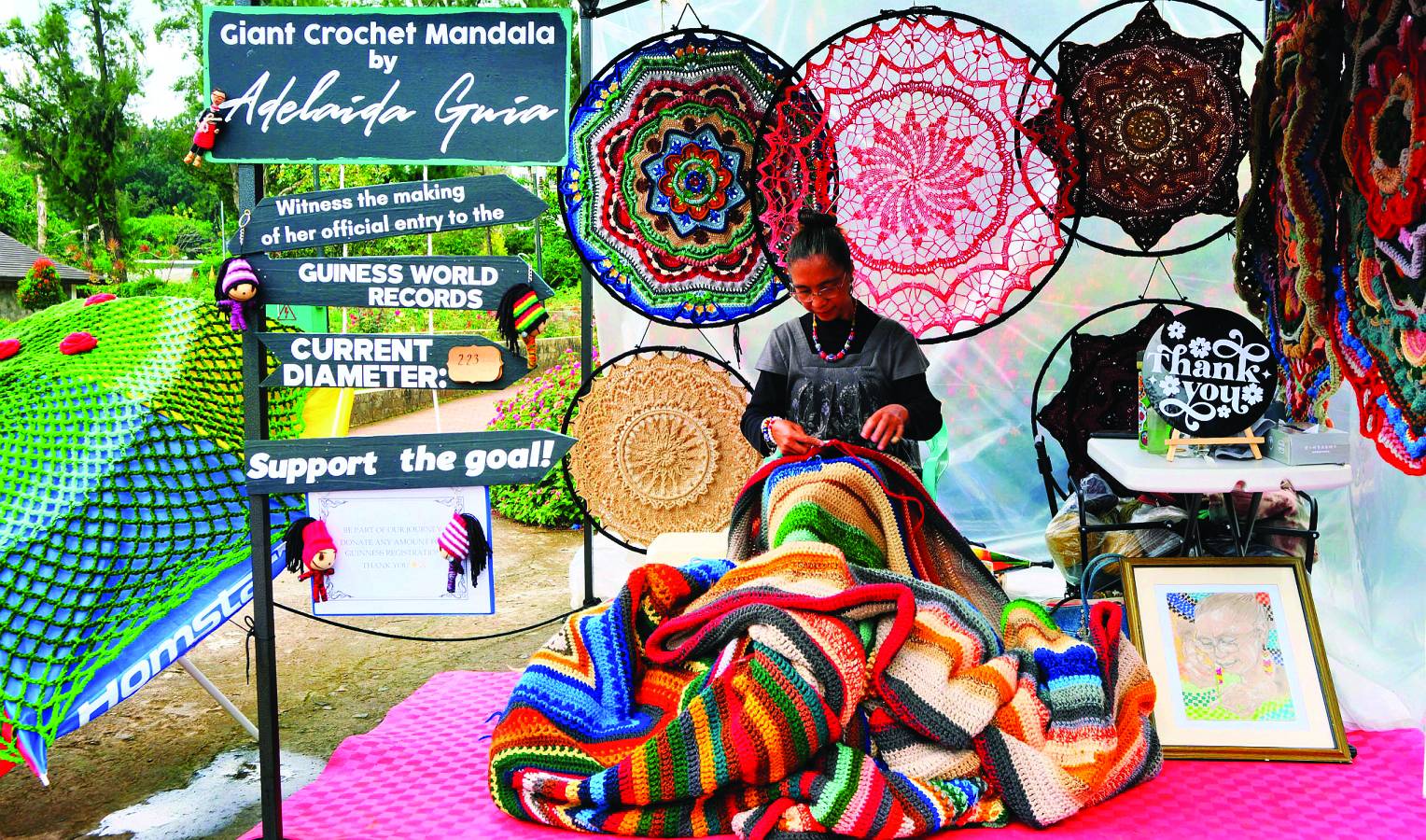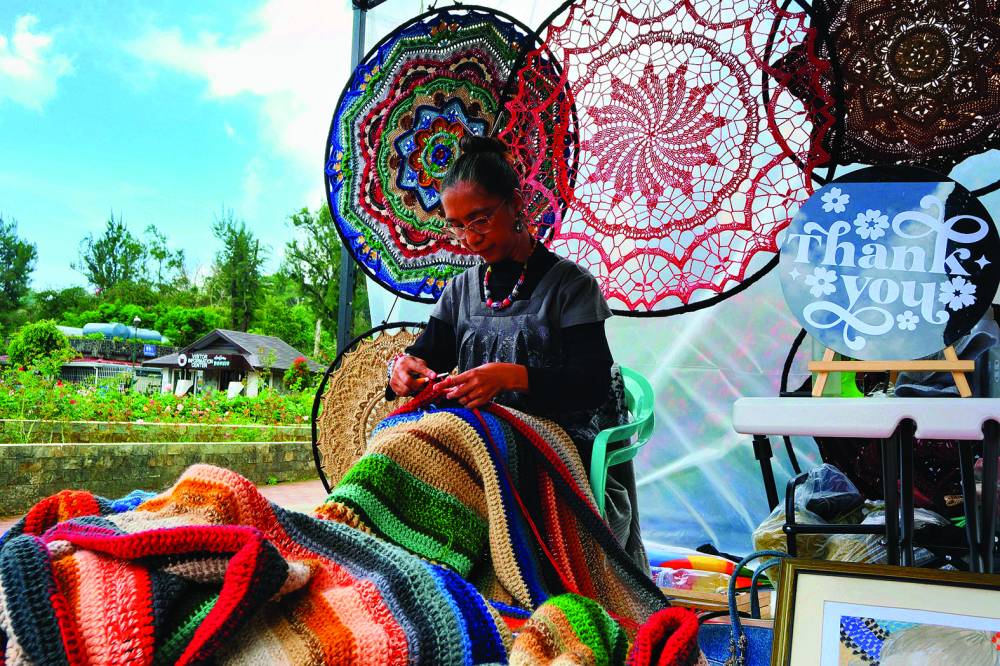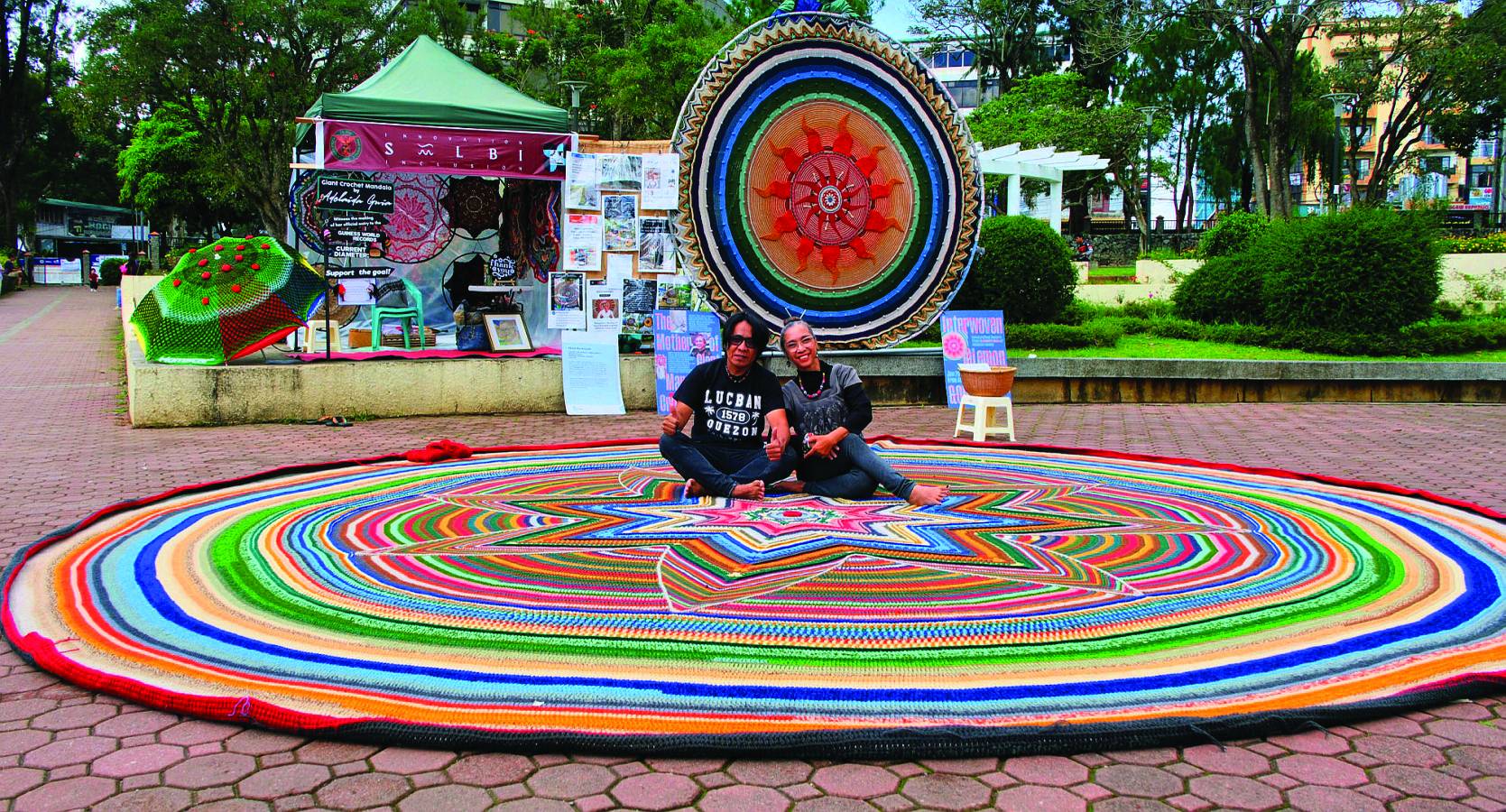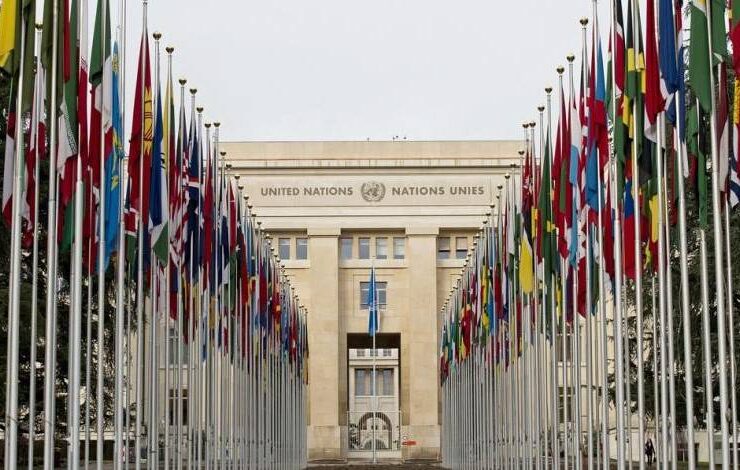In Baguio, mandala artist knits for world record

BAGUIO CITY—Adelaida Guia, a Baguio migrant who has gained a social media following for producing and displaying giant mandalas, has been spending her days at the Burnham Park’s Rose Garden crocheting what is now a 223-inch diameter mandala, which she hopes will be listed in the Guinness World Records.
The 55-year-old mother of five has quite literally put herself on display at the park since May. People have watched Guia crochet and shape recycled rug and yarn into a new, multicolored mandala of her own design.
Mandala is Sanskrit for “circle” and refers to mystical diagrams symbolizing universal connectivity. Mandalas are also used in Buddhist and Hindu traditions as totems for meditation.
“I wanted to show the public how I build my mandalas in real time,” Guia told the Inquirer, adding that she also hopes to generate documentary support for her aspiration to become a Guinness record holder in a new category she is proposing: Giant crocheted mandala completed by a single individual.
“There are previous records for giant crocheted mandalas, but these were created by multiple crocheters,” she noted.

For example, the Guinness World Records website lists last year’s record holders in India, led by Randeep Singh Nandal, who collaborated with others to produce the “largest display of mandalas” with 8,282 entries.
Guia said working in public might also inspire generosity from both the government and Baguio residents, as she strives to raise the $800 (P45,000, according to current exchange rates) registration fee required by Guinness World Records to begin the validation process.
If successful, Guia said the record could once again put Baguio on the global map.
Creative city
In 2017, the summer capital was named the Philippines’ first Creative City for Crafts and Folk Art by the United Nations Educational, Scientific and Cultural Organization. “Creative cities” are recognized for the contributions of their artists to the local economy.
A former customer relations employee at a call center in Metro Manila, Guia beams whenever park visitors ask her to pose for selfies. Some recognize her from past news reports, online videos or photos of her work.
“Are you the mandala lady?” a woman once asked her.

Back in 2022, Guia was a quiet and solitary figure when Inquirer photographer EV Espiritu first saw her crocheting along downtown Session Road during the second year of the COVID-19 pandemic.
With two years of quarantine and restricted travel having crippled the economy, Mayor Benjamin Magalong had permitted small businesses and startup operators like Guia to sell their wares along the summer capital’s main street every Sunday.
Media exposure
Guia was an admirer of American crochet artist Helen Shrimpton. Her giant mandalas, often based on Shrimpton’s templates, were visually striking, though sometimes considered expensive.
She quickly attracted public curiosity. After the Inquirer published her story in February 2022, other publications and television programs gave her more media exposure.
Guia said the pandemic gave her time to create her giant mandalas, four years after relocating from Metro Manila to Baguio in November 2016 with her husband, Philip, a Cordilleran, and their children Ezekiel, Jeniel, Danielli, Azriel and Giddiel.

They brought with them their crafts business, “Abiakak,” which is “kakaiba” (unusual) spelled in reverse. Philip, also a craftsman, frequently travels to trade fairs, according to Guia.
Danielli has followed in her mother’s footsteps, learning the trade on her own. Guia said she inherited her passion for crochet from her own mother, an avid crocheter, while growing up in Sta. Mesa, Manila.
Guia has been developing her entrepreneurial and artistic skills through the Imagineers program hosted by the Creative Baguio City Council.
Recently, she enrolled in the startup incubator program of the University of the Philippines Baguio called “Silbi” (to serve).
Her original mandalas depend on the type and availability of recycled yarn she can find in the market, she said, so the finished works that people admire are sometimes “the outcome of circumstances.”





















